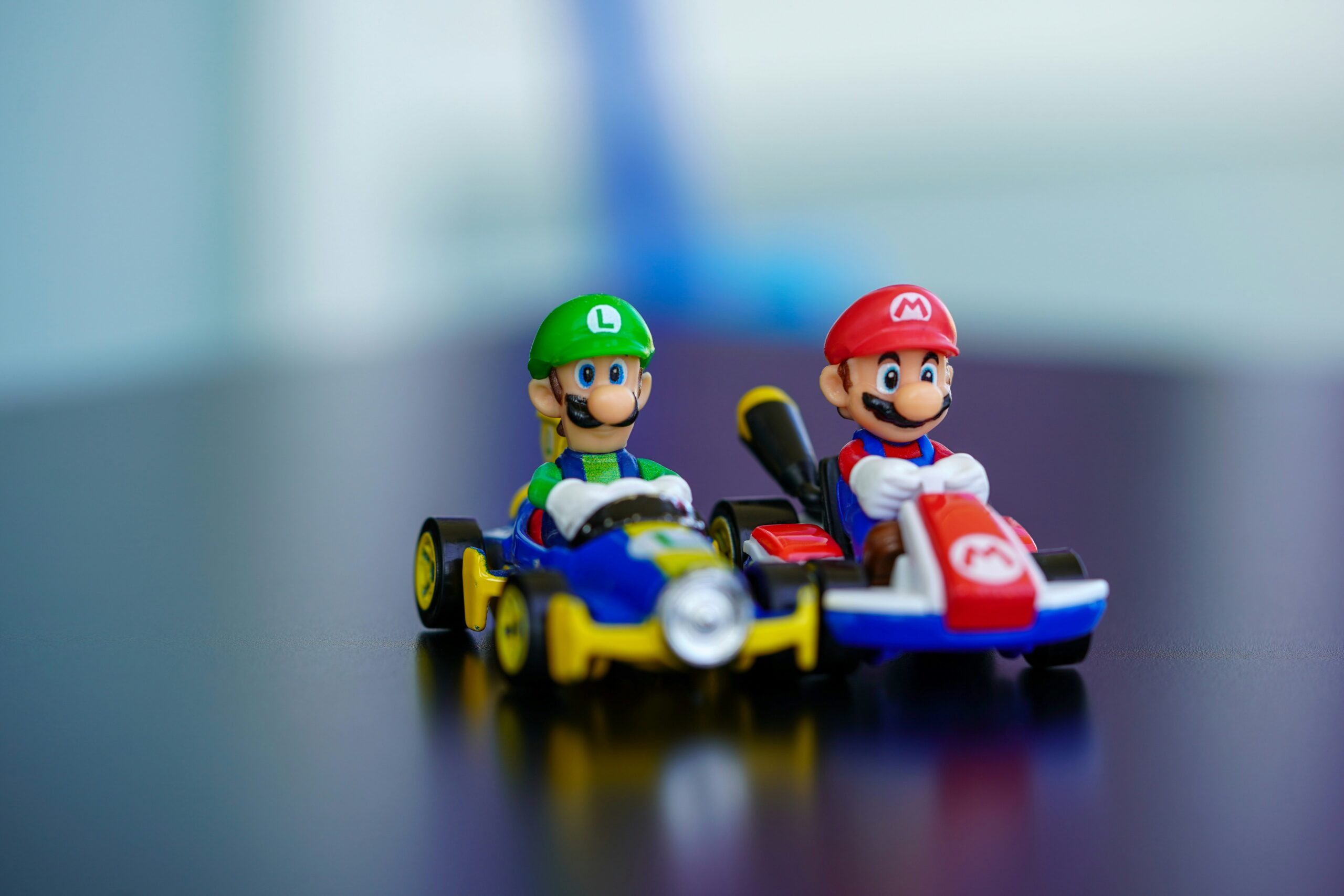In the high-speed lane of Japan’s gaming scene, one title has consistently waved the checkered flag since its inception: Mario Kart. A colorful, competitive, and captivating game, it has raced beyond mere popularity to become a cultural phenomenon. Debuting in the early ’90s, it turned the familiar world of Mario on its head, offering a frenetically fun racing experience that captivated players of all ages. This article delves into the journey of Mario Kart, exploring how it raced to the top of Japan’s gaming charts and why it remains an unrivaled force in the industry.
Mario Kart’s Explosive Start in Japan
Mario Kart made its groundbreaking debut in Japan in 1992, immediately setting the standard for what a racing game could be. Unlike anything before, it combined high-speed racing with the whimsical world of Mario, offering a unique blend of competition and fantasy. Its launch was met with critical acclaim and commercial success, showcasing the appetite of Japanese gamers for innovative and engaging experiences. This explosive start was a sign of things to come, as Mario Kart quickly became a cornerstone of gaming in Japan.
The Race to Gaming Fame: How Mario Kart Did It
The secret to Mario Kart’s rapid ascent to fame lay in its accessibility and its depth. It was easy enough for beginners to pick up and play, yet it offered enough complexity for seasoned gamers to master. Nintendo’s genius marketing strategy, which leveraged the beloved Mario franchise, propelled the game into the spotlight. Word-of-mouth and positive reviews did the rest, solidifying Mario Kart’s place in the hearts and homes of Japanese gamers. This formula of simplicity, depth, and strategic branding was key to its racing to gaming fame.
Kart Racing Craze: Japan’s New Gaming Love
Following the success of Mario Kart, Japan witnessed a surge in the popularity of kart racing games. It wasn’t long before other developers tried to capture the magic that Nintendo had bottled. However, despite the influx of competitors, Mario Kart remained the undisputed leader, thanks to its innovative gameplay, memorable characters, and ever-evolving game mechanics. This craze for kart racing cemented the genre’s place in Japan’s gaming landscape, with Mario Kart leading the pack.
Mario Kart’s Impact on Japan’s Gaming Culture
Mario Kart’s impact on Japan’s gaming culture has been profound. It has become more than just a game; it’s a cultural touchstone that transcends generations. Families and friends often gather to compete in spirited races, fostering a sense of community and shared joy. The game has also influenced Japanese pop culture, inspiring merchandise, themed cafes, and even kart-racing experiences in real life. Mario Kart has undoubtedly contributed to the social aspect of gaming in Japan, bringing people together in a way few games can.
The Secret Sauce of Mario Kart’s Success
The enduring success of Mario Kart can be attributed to several key factors. Firstly, its universal appeal; the game is as much fun for a five-year-old as it is for someone in their fifties. Secondly, Nintendo’s commitment to innovation has kept the series fresh, with each new installment offering new tracks, characters, and modes. Finally, the competitive yet playful spirit of the game encourages friendly competition, making every race as thrilling as the last. This secret sauce has kept Mario Kart at the forefront of Japan’s gaming scene for decades.
Japan’s Gaming Scene: Before and After Mario Kart
Before Mario Kart, Japan’s gaming scene was dominated by traditional genres like RPGs and action-adventure games. Mario Kart’s arrival heralded a shift towards more family-friendly, multiplayer experiences. It demonstrated the potential for video games to be social experiences, enjoyed by people of all ages together. The post-Mario Kart era has seen a more diverse gaming market in Japan, with a greater emphasis on games that can be played casually and socially.
Mario Kart: Shaping Multiplayer Gaming in Japan
Mario Kart has played a pivotal role in shaping multiplayer gaming in Japan. Before its advent, multiplayer gaming was largely limited to split-screen or turn-based experiences. Mario Kart introduced dynamic, real-time multiplayer races that were both competitive and inclusive. This innovation sparked a shift in how games were designed, with a greater focus on multiplayer aspects to replicate Mario Kart’s successful formula. The game’s influence is evident in the numerous multiplayer titles that now populate the Japanese gaming market.
Why Mario Kart Remains a Bestseller in Japan
Decades after its debut, Mario Kart continues to top sales charts in Japan. Its enduring appeal lies in its ability to evolve while maintaining the core elements that fans love. The introduction of online multiplayer has also played a significant role, allowing players to compete against others across Japan and around the world. Moreover, Mario Kart’s appeal spans generations, making it a game that parents can enjoy with their children. Its combination of nostalgia, innovation, and universal accessibility ensures that Mario Kart remains a bestseller in Japan.
The Evolution of Mario Kart in Japanese Markets
Over the years, Mario Kart has evolved to meet the changing tastes and technologies of the Japanese market. From its 16-bit beginnings to the stunning HD visuals of the latest versions, each iteration has offered something new. Innovations such as the anti-gravity racing of Mario Kart 8 and the augmented reality of Mario Kart Live: Home Circuit have kept the series at the cutting edge of gaming technology. These evolutions have ensured that Mario Kart remains relevant and beloved in the fast-paced world of video gaming.
Mario Kart and Its Rivals: A Look at the Competition
Despite the emergence of numerous rivals, Mario Kart has maintained its position as the king of kart racing games in Japan. Competitors have tried to emulate its winning formula, with varying degrees of success. Some have introduced new gameplay mechanics, while others have focused on creating more realistic racing experiences. However, none have managed to capture the magic of Mario Kart’s perfect blend of fun, accessibility, and competitive depth. This dominance speaks to the unique place Mario Kart holds in the hearts of Japanese gamers.
From Consoles to Mobile: Mario Kart’s Strategic Shift
Recognizing the shift towards mobile gaming, Nintendo launched Mario Kart Tour for smartphones, bringing the iconic racing experience to an even wider audience. This strategic shift has been instrumental in introducing Mario Kart to new generations of gamers in Japan, who may not own traditional gaming consoles. The mobile version has been a massive hit, proving that the appeal of Mario Kart transcends platforms. This move has not only expanded Mario Kart’s fan base but has also solidified its status as a versatile and adaptive franchise.
Mario Kart’s Future: Speeding Ahead in Japan
Looking to the future, Mario Kart shows no signs of slowing down in Japan. With the continued evolution of gaming technology and the enduring love for the Mario universe, the potential for new and innovative Mario Kart experiences is boundless. Whether through virtual reality, further advances in augmented reality, or yet-to-be-imagined technologies, Mario Kart is poised to continue its winning lap in Japan’s gaming scene. The journey of Mario Kart, from its explosive start to its current dominance, is a testament to its timeless appeal and Nintendo’s unwavering commitment to innovation.
From its revolutionary debut to its position today as a cultural icon, Mario Kart’s journey in Japan is a remarkable tale of innovation, evolution, and enduring appeal. It has shaped the gaming landscape, influencing not just the genre of racing games but the very fabric of multiplayer gaming. As Mario Kart continues to adapt and evolve, it remains a beloved part of Japan’s gaming culture, proving that some games do much more than entertain; they bring people together, create memories, and forge a legacy that races on through the ages.








